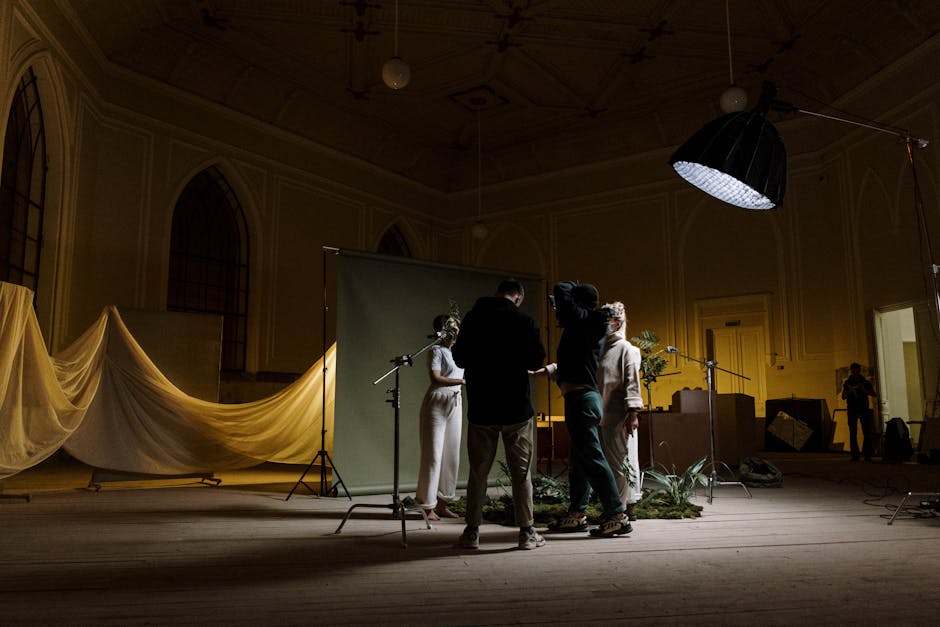Historical Evolution of Political Portraits
From ancient murals to modern digital photography, portraits of political leaders have chronicled power's evolution. Hans Holbein the Younger's portrayal of Henry VIII in 1537 signaled strength and authority. As brush strokes gave way to camera clicks, political portraiture expanded from royalty to democratic leaders.
Photography brought immediacy and candor to political portraits. Winston Churchill's wartime portrait by Cecil Beaton revealed a leader both commanding and weary. Barack Obama's ascent, captured through Callie Shell's lens, displayed sincerity beyond words. This shift opened windows into public figures' grandeur and vulnerabilities.
Political portraits reflect cultural nuances and shape perceptions of leaders. Large, looming frames have given way to glossy magazine spreads, yet the essence remains—each portrait tells a story of influence. Modern political photography echoes the stylistic rigor of painted portraits while capturing raw, unscripted moments.
The lens continues to democratize portraiture, chronicling how rulers and nations shape their identities. These visual legacies document history itself, reframing how we see power and its bearers in each era.
The Role of Portraits in Political Messaging
Political portraits are calculated acts of communication. Every element—from hand placement to background choice—is crafted to project authority or invite connection. These visual cues delineate a leader's persona and purpose, suggesting who they are and how they wish to be seen.
Leaders are often staged against backdrops that echo national pride or personal achievements, embedding themselves within the cultural landscape. These images, spread across media, weave an enduring connection between the leader's visage and their story. By exploiting the portrait's dual nature as art and document, politicians craft narratives that linger in public imagination.
The portraits of figures like Nelson Mandela or Angela Merkel are potent symbols of perception management. The medium used is telling—contrast the timeless poise of Yousuf Karsh's portraits with the immediacy of contemporary social media images. While the former offers an immutable image of strength, the latter invites viewers into the everyday, emphasizing accessibility.
Contemporary political photography often captures leaders in unguarded moments, fostering a connection that painted portraits often eschewed. This evolution brings shared experiences into focus, resonating on an emotional level.
Whether through paint or pixels, political portraits engage our desire for leadership that inspires. They reveal the intricate dance between art and power that shapes our understanding of those who lead.

Contemporary Political Portraiture
Modern political portraitists use diverse styles and mediums to create images that resonate within today's sociopolitical landscape. Their work redefines how we perceive and critique our leaders and their legacies.
- Yvette Coppersmith: Known for portraits of powerful female figures, creates art that comments on representation and empowerment.
- Atong Atem: Uses photography to explore identity, migration, and belonging, challenging colonial narratives.
- Peter Drew: Takes political portraiture to public spaces with the AUSSIE poster series, questioning national identity.
- Kaylene Whiskey: Enriches portraiture with symbolic layers celebrating cultural identity and critiquing contemporary issues.
Contemporary political portraiture blurs lines between commentary and art, transparency and artifice. It encourages us to scrutinize power through an empathetic yet critical gaze, encapsulating the essence of leadership—its frailties and potential—in every brushstroke and shutter click.
The Intersection of Art and Activism
Political portraiture as a form of activism transcends aesthetic function, becoming a tool for justice and equity. Artists use portraits to document, disrupt, and challenge established orders, igniting change.
Blak Douglas wields portraiture as a counter-narrative to prevailing paradigms. His Archibald Prize-winning portrait of Karla Dickens demands recognition of Indigenous struggles and triumphs. Douglas uses portraiture as a storytelling medium, propelling these narratives onto national and international stages.
Gordon Bennett transforms portraits into battlegrounds where cultural identity and colonial history clash. His visual language challenges viewers to confront uncomfortable truths, contesting and deconstructing imagery of power. Bennett's work urges a reassessment of historical perspectives.
This interplay of art and activism extends to collective engagements. Shepard Fairey's iconic "Hope" poster of Barack Obama demonstrates how art can transcend its medium to inspire collective spirit and optimism.
As catalysts for activism, political portraits compel us to critique societal frameworks, question hierarchies, and envision a more inclusive future. The face in the frame becomes a call for reflection and action, affirming art's capacity to shape history and alter its course.
Political portraits serve as powerful symbols, bridging art and influence. They capture the essence of leadership, offering a glimpse into the human stories behind power. These images continue to shape our understanding of authority, leaving an indelible mark on history and society.
- Shell C. Obama: An Intimate Portrait. Little, Brown and Company; 2017.
- Kander N. Obama's People. The New York Times Magazine. 2009.
- Platon. Power: Portraits of World Leaders. Chronicle Books; 2011.





















